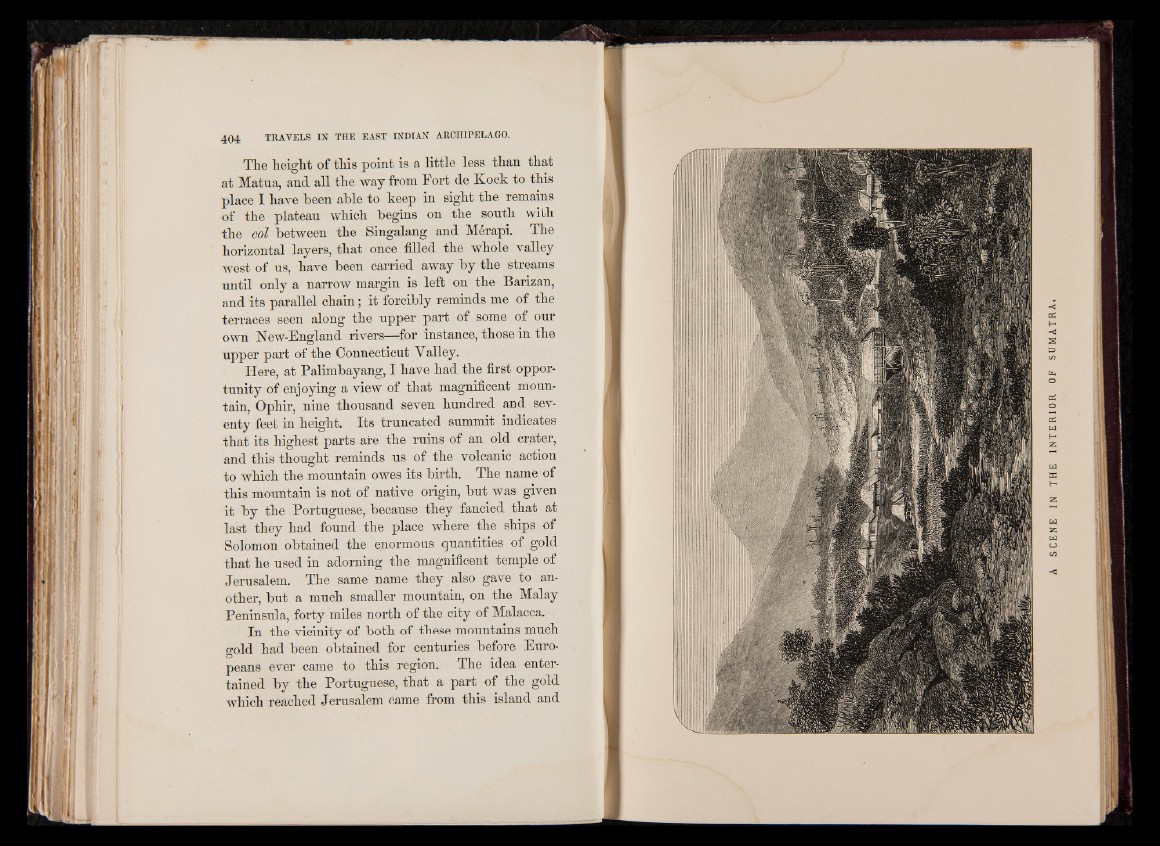
The height of this point is a little less than that
at Matua, and all the way from Fort de Kock to this
place I have been able to keep in sight the remains
-of the plateau which begins on the south with
the col between the Singalang and Merapi. The
horizontal layers, that once filled the whole valley
west of us, have been carried away by the streams
until only a narrow margin is left on the Barizan,
and its parallel chain; it forcibly reminds me of the
terraces seen along the upper part of some of our
own ISTew-England rivers—-for instance, those in the
upper part of the Connecticut Valley.
Here, at Palimbayang, I have had the first opportunity
of enjoying a view of that magnificent mountain,
Ophir, nine thousand seven hundred and seventy
feet in height. Its truncated summit indicates
that its highest parts are the ruins of an old crater,
and this thought reminds us of the volcanic action
to which the mountain owes its birth. The name of
this mountain is not of native origin, but was given
it by the Portuguese, because they fancied that at
last they had found the place where the ships of
Solomon obtained the enormous quantities of gold
that he used in adorning the magnificent temple of
Jerusalem. The same name they also gave to another,
but a much smaller mountain, on the Malay
Peninsula, forty miles north of the city of Malacca.
In the vicinity of both of these mountains much
gold had been obtained for centuries before Europeans
ever came to this region. The idea entertained
by the Portuguese, that a part of the gold
which reached Jerusalem came from this island and